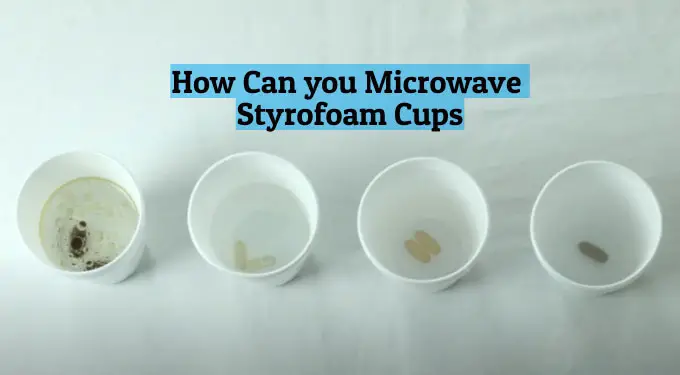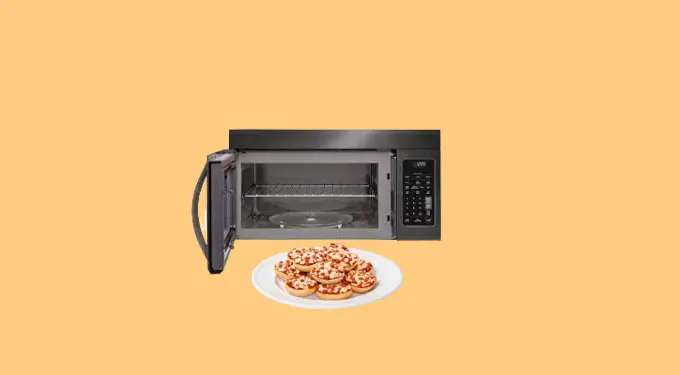The microwave is quick, easy, and doesn’t require any extra cleanup. This is why most of us turn to it for reheating leftovers or making popcorn. However, there are some things you should never put in the microwave. The most known of these forbidden materials are metallic objects that arc when exposed to microwave radiation. But can you microwave styrofoam cups? Let’s find out.
What is styrofoam made of?
Most people are familiar with styrofoam, the white padding material often used in packaging. What many people don’t know, however, is that styrofoam is made from polystyrene, a synthetic polymer that is derived from petroleum.
Polystyrene was first developed in 1839 by German chemist Eduard Simon, and it was originally used as an insulating material. In 1937, Dow Chemical Company developed a process for mass-producing polystyrene, and the material soon became widely used in a variety of applications.
Today, styrofoam is most commonly used as a packaging material, but it is also used in insulation, construction materials, utensils like cups, and even art projects. Thanks to its versatility and low cost, styrofoam has become a staple of modern life.
What is styrofoam cups made of?
Styrofoam cups are made of polystyrene, a synthetic polymer that is derived from petroleum. Polystyrene is a lightweight plastic that is often used to make disposable packaging and Styrofoam cups.
It is produced by combining styrene monomers and then adding a blowing agent to create bubbles in the plastic. The finished product is lightweight and durable, making it an ideal material for use in disposables, such as a polystyrene cup.
However, polystyrene is not biodegradable, meaning that it can take up hundreds of years to decompose. As a result, Styrofoam cups have come under fire from environmentalists who argue that they are contributing to the build-up of plastic pollution in landfills and the ocean.
Where does styrofoam come from?
Styrofoam is actually made from extruded polystyrene foam, which is derived from petroleum. In order to make styrofoam, manufacturers start with a substance called styrene monomer. This monomer is then combined with other chemicals in order to create a foam-like material. Finally, this material is extruded into the desired shape and size.
How can you microwave styrofoam cups?
You’ve probably seen polystyrene (styrofoam) cups at take-out restaurants and even at your favorite coffee shop. And you sure love your coffee cups. Still, on one of those occasions when you arrive home or at work with the coffee already cold, you may have wondered, can you microwave styrofoam cups? The answer is yes, but only if the cup is specifically labeled as microwave-safe.
When polystyrene is heated in a microwave oven, it breaks down and releases harmful chemicals that can leach into hot foods. However, microwave-safe polystyrene does not release these chemicals and is safe to use in the microwave. So before you take the microwave shortcut, ensure the cup has the microwave-safe label.
If you can’t find the label, play it safe and transfer your coffee to a microwave-safe container before reheating.
Can you microwave styrofoam plates?
Many people are unsure if they can microwave styrofoam plates, just like with the take-out containers. The answer is that you can only microwave a styrofoam plate if it has a microwave-safe label.
If you’re not sure if your styrofoam product is microwave-safe, it’s best to err on the side of caution and not microwave it. Still other microwave precautions such as not using metallic utensils in the oven, still apply.
Now that you shouldn’t reheat food in styrofoam containers, what options do you have? Here are a few suggestions:
– Transfer the food to a different container before heating. This can be a glass or ceramic container and then transfer back to the foam container.
– Reheat the food in the conventional oven, but using an oven-safe container.
– If it’s a pizza, reheat it on the stove on low heat. Before placing the lid, sprinkle some water over it.
– In the case of soups and stews, use a saucepan on the stovetop.
– If the food is cold and you don’t mind eating it that way, skip the reheating step altogether!
Can You Microwave Cup Noodles?
Frequently Asked Questions
Can you microwave polystyrene cups?
Yes, but only if the cup is specifically labeled as microwave-safe. When a polystyrene container is heated in a microwave, it breaks down and releases carcinogenic chemicals that can contaminate the food.
However, microwave-safe polystyrene foam containers do not release these toxic chemicals and are safe to use in the microwave. Even so, do not let the styrofoam cup microwave for long. Just get your beverages warm, and turn off the oven.
Can you microwave foam cups?
Foam cups are made from polystyrene, which is a type of plastic. While most foam cups are made from materials that are safe to microwave, there are a few things to keep in mind when reheating food or drinks in one. First, make sure the cup is labeled “microwave-safe.”
Avoid using foam cups with metal rims or lids, as these can cause sparking and potentially start a fire.
Always use a lower setting when microwaving in a plastic container, as high heat can cause the cup to warp or melt. With these precautions in mind, you can microwave foam cups without worry.
Are styrofoam cups microwave safe?
Yes, but only if the cup is specifically labeled as microwave-safe. If unsure, it’s best to play it safe and transfer your coffee to a microwave-safe mug before reheating.
Are foam cups microwave safe?
Foam cups are generally safe to microwave, but only if they are not made of polystyrene. Otherwise, follow the same precautions as with microwaving a polystyrene container.
Final Words
In conclusion, you can only microwave polystyrene foam cups and plates if they are specifically labeled as microwave-safe. If you’re not sure, or if the instructions are unclear, transfer into a microwavable food container before reheating.



